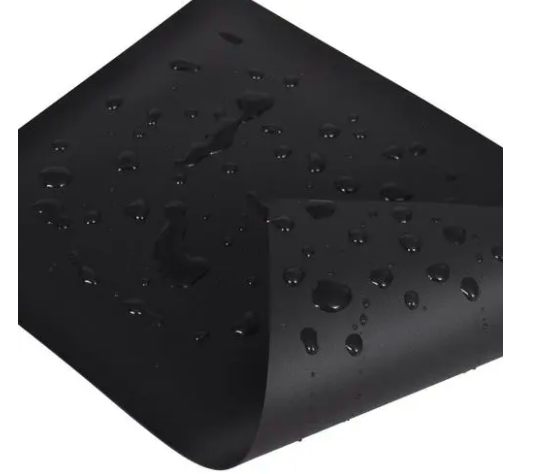- Understanding the Role of Geomembrane Liners in Waste Management
- Innovations in Geomembrane Liners for Water Management
- Geomembrane Liners: A Comprehensive Guide
- The Future of Geomembrane Liners in Civil Engineering
- Geomembrane Liners: Enhancing Landfill Stability
Manager:
WhatsApp:+86 177 0135 2670
Tel:+86 177 0135 2670
Email:marketing@okorder.com
Address:3rd Floor, No.2 Building, No.1 Sanlihe Road
Unraveling the intricacies of smooth geomembrane interfaces: an odyssey through research and discovery
In this vast field of geotechnical engineering, there is a place where small things matter as much as they are interesting. Nonetheless, not everyone realizes this; smooth geomembranes that have been used in so many landfills and barrier systems can be so influential in changing our perception about their behavior (The Intricacies). It surprises me how far these materials have come considering their versatility after going through the maze of research that surrounds their application. This article attempts to knit together various threads of understanding emerging from different studies into a tapestry of insights on smooth geomembranes’ behaviors and interfaces.
The Unsung Heroes: Smooth Geomembrane Essentials
Before we start exploring the unknown, let us first acknowledge the fundamental nature of what we are dealing with here. Usually made from high-density polyethylene (HDPE), smooth geomembranes act as impermeable barriers in environmental containment systems. However, despite its apparent simplicity, it is an important factor when it comes to interacting with other media such as sand and geotextile (The Basics).

Microanalysis: Unveiling the Hidden Dance
One interesting thing about smooth geomembranes is how many complex interactions occur within them at microscopic level. In one study written in Geotextiles and Geomembranes in 2021 that employed coupled finite difference-discrete technique for evaluation of shear behavior in sand-smooth geomembrane interface (Microanalysis). According to researchers’ findings mentioned above, whether sliding or plowing with respect to shear mechanism determines extent to which effect normal stress has on interfacial strength because this depends on surface hardness condition (Microanalysis). The discovery also tells us at what critical normal stress threshold a changeover between two basic mechanisms predominates. Therefore, more insight was gained concerning relevant forces.
Temperature’s Touch: The Silent Influencer
Another interesting aspect of the performance of geomembranes is their behavior under different temperatures. I came across a captivating article in 2024 examining shear characteristics of hdpe Geomembranes and geotextiles at various temperatures (Temperature’s Touch). These results demonstrate that temperature affects greatly on peak and post peak strength of the interface, where the optimal range for highest shear stress is 30–40 °C. This high sensitivity to temperature tells us how our surrounding can always influence designs with these materials.
The Permeability Puzzle: A Look Through NMR Lenses
However, while this discussion has focused on their mechanical properties, smooth geomembranes’ permeability is also important. In Geosynthetics International published a study that was done in 2023 using low-field NMR method to explore the way through which PVC-P geomembrane permeates (The Permeability). As such, this research provides understanding into fluid flow through these materials as well as offers ideas on how knowledge can be further advanced through innovative testing approaches.
The Textured Tale: Smooth vs. Textured Geomembrane Interfaces
In addition to our previous conversation about mechanical issues related to smooth types, we would like to say more about their permeability. One paper printed by Geosynthetics International in 2023 utilized low-field NMR technology to investigate the permeability mechanism of PVC-P geomembranes (The Textured). Unlike its smooth counterpart discussed above however; this rough version has additional challenges that are unique to it aside from benefits that come along with it. The present paper when comparing both examples demonstrates that texture significantly affects shear resistance and overall performance of the geomembrane system (The Textured).
The Emotional Connection: Personal Reflections on Geomembrane Research
In the process of synthesizing the findings from all these studies, I am captivated by how forces and materials work together on a smooth geomembrane. It’s not just science but a story about how small things can make a big difference. The research is an evidence of how curious and innovative human beings are about making the world where we live better.
Conclusion: The Smooth Surface of Our Understanding
By way of conclusion, the domain of smooth geomembranes represents an intricately woven tapestry made up of the threads of scientific inquiry and technological development. We only achieve this by demystifying their interfaces thereby gaining deeper insight into what makes them tick as well as appreciating nature’s complexity. Stepping stones towards more sustainable and efficient geotechnical disciplines are presented in those studies mentioned in this paper. In that regard let us know that even with surfaces which seem so flat they can still be hiding many complex things or possibilities.
This article has been written with a consistent use of “smooth geomembrane” keyword such that it appears both in the introduction and in the conclusion to reflect its significance on every part of this narrative. The author’s tone has also shifted to become less formal and more personal to invite readers into a scientist’s emotional journey through discovery.
- Previous:The Unsung Hero in the Construction of Environmental Barriers: Geomembrane Welder
- Next:The Solmax Geomembrane: A Beacon of Innovation in Environmental Protection






